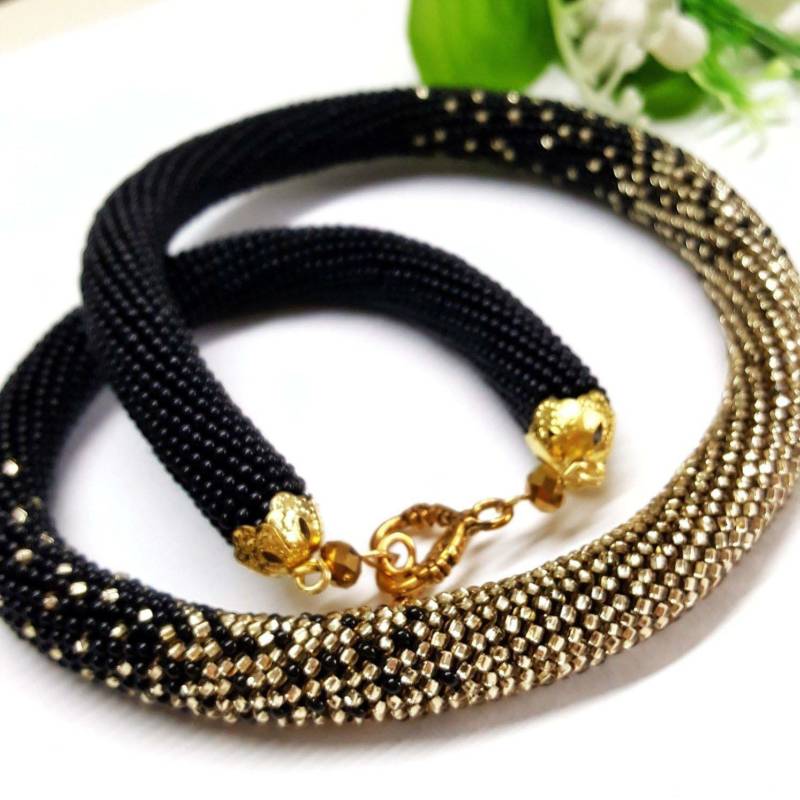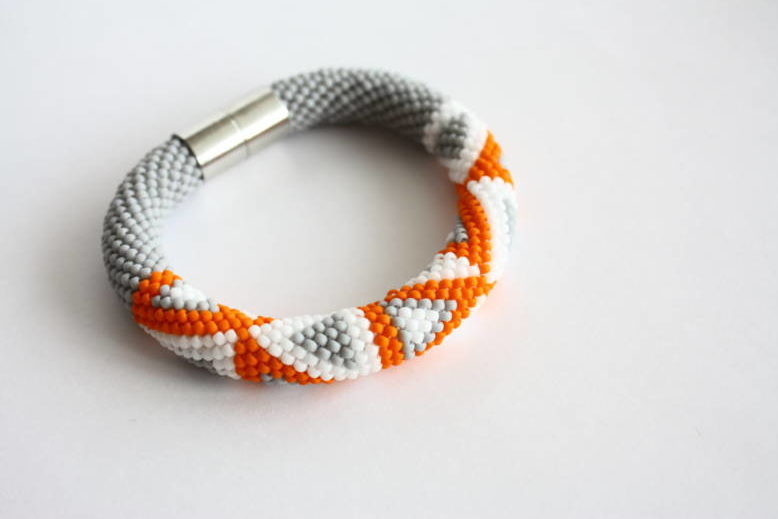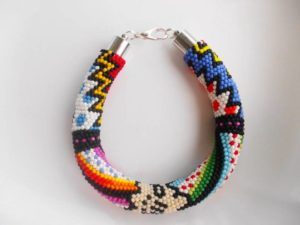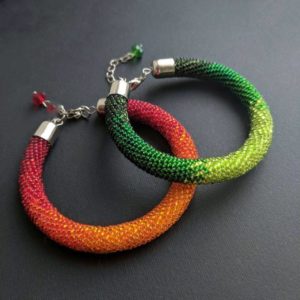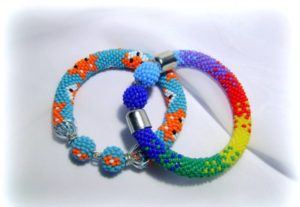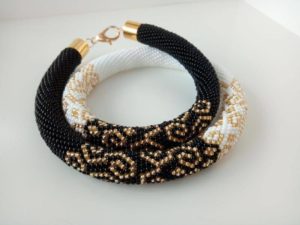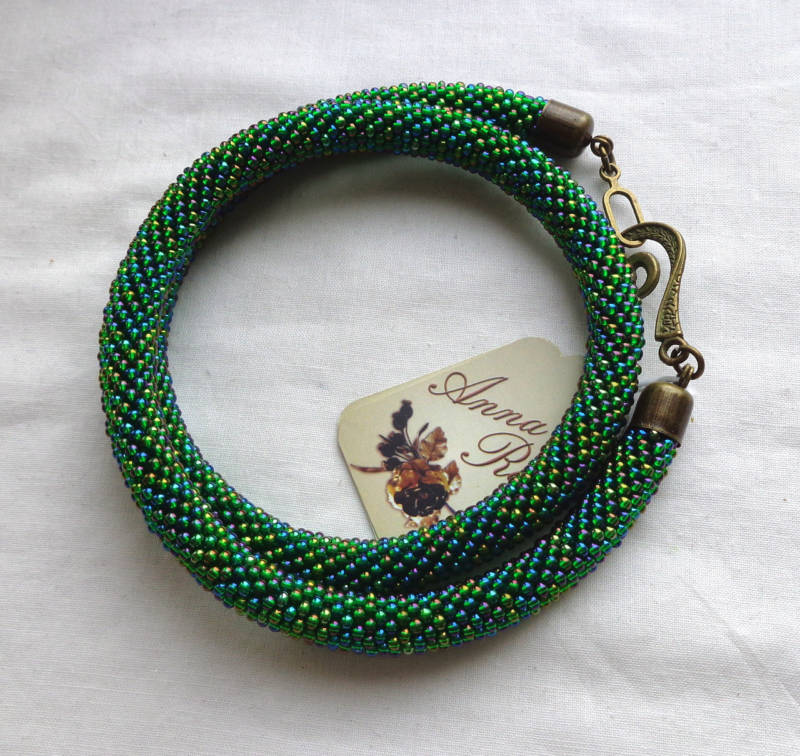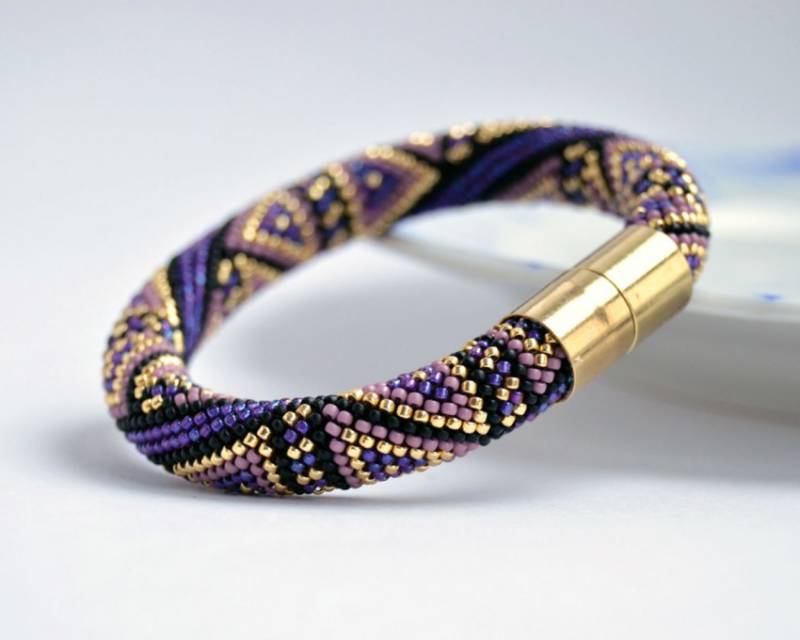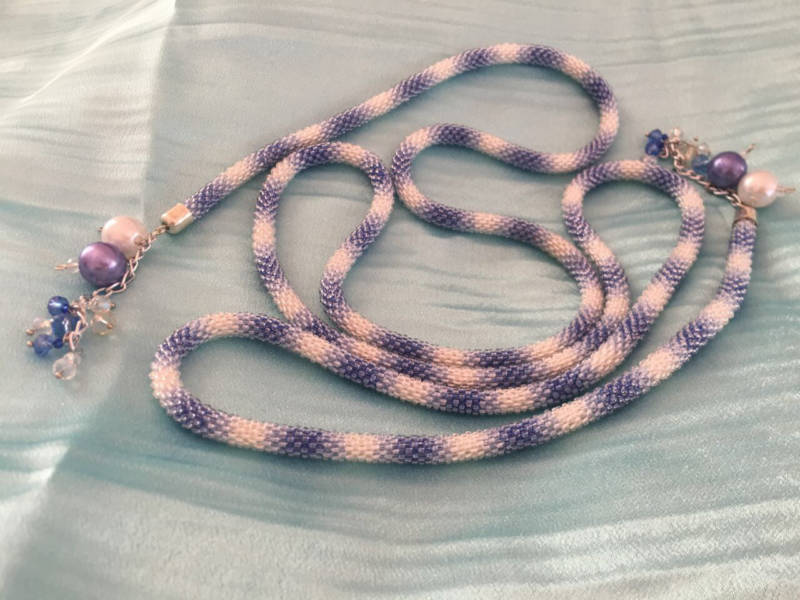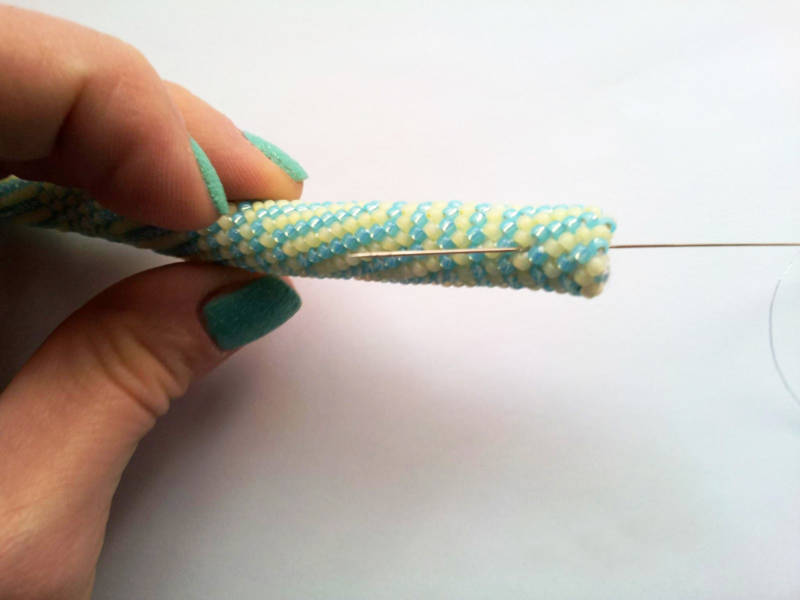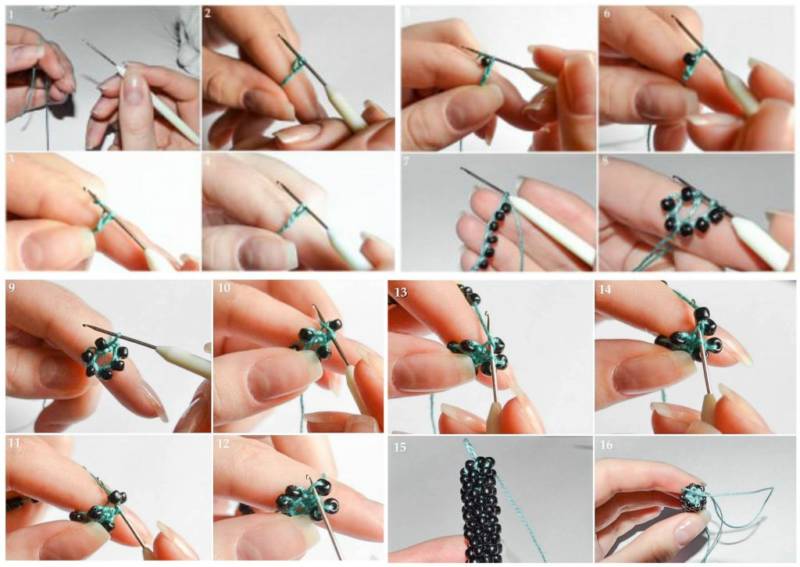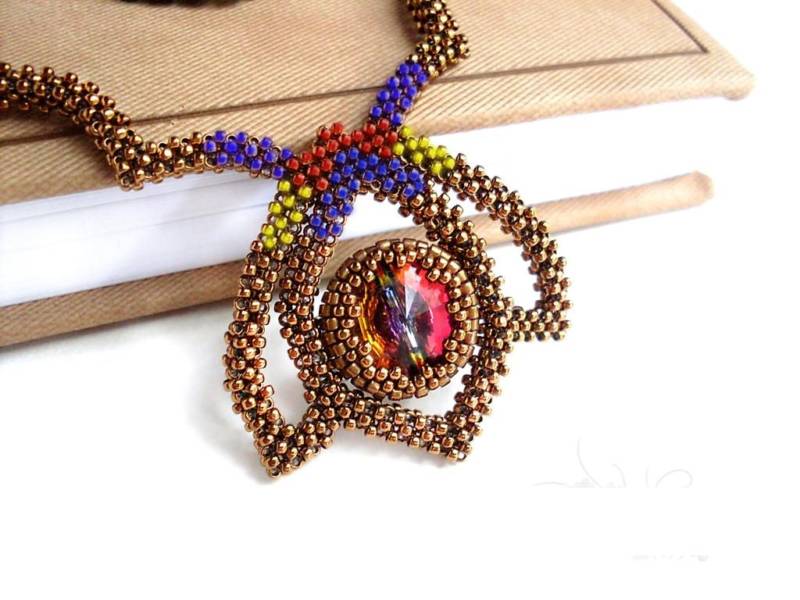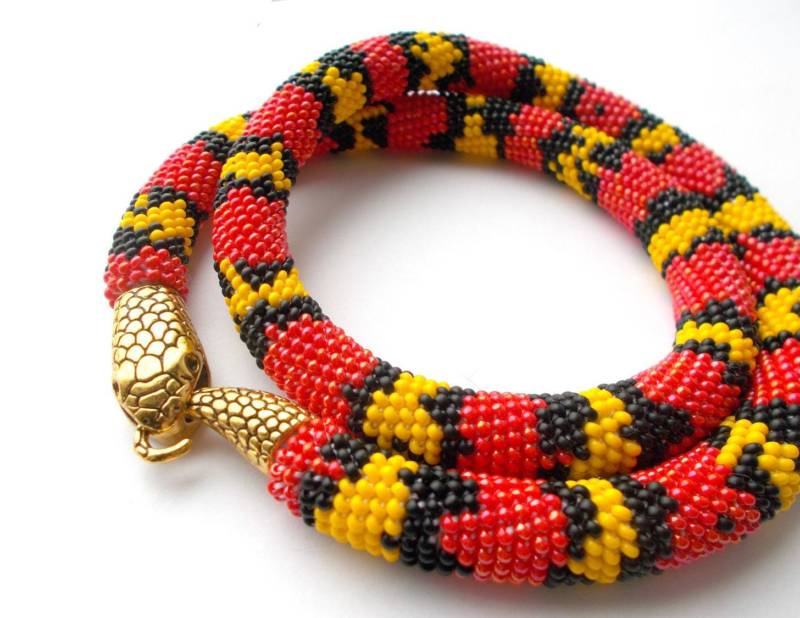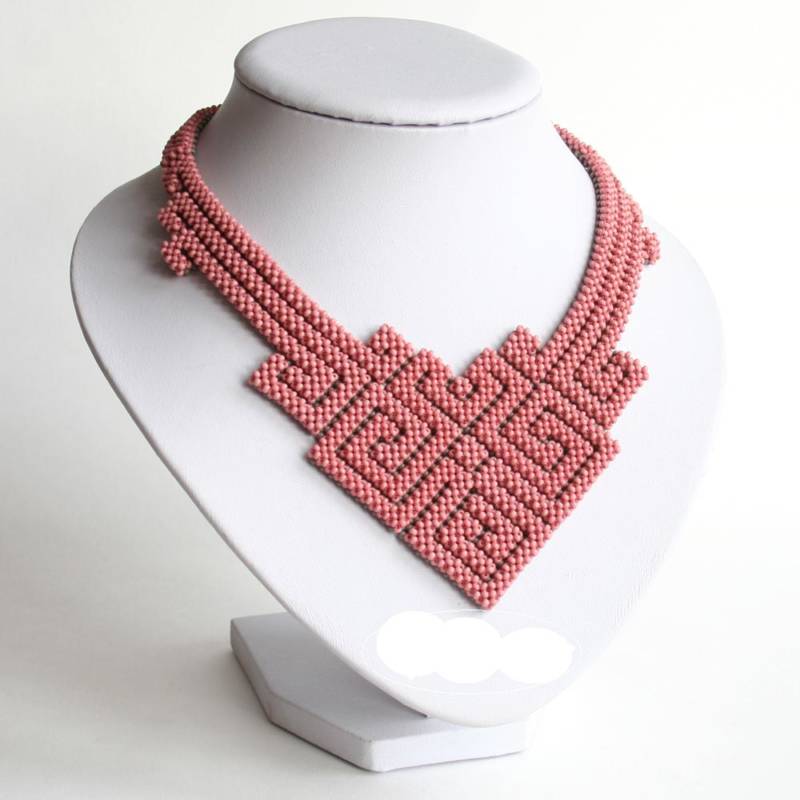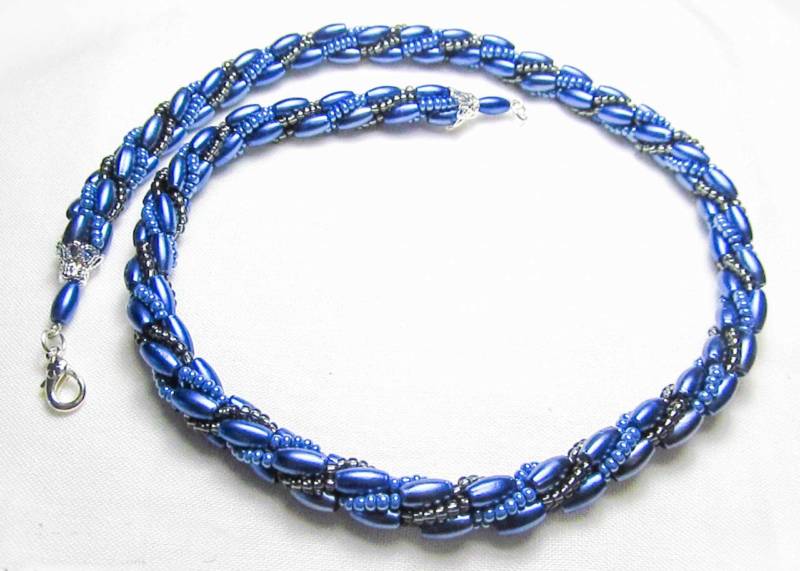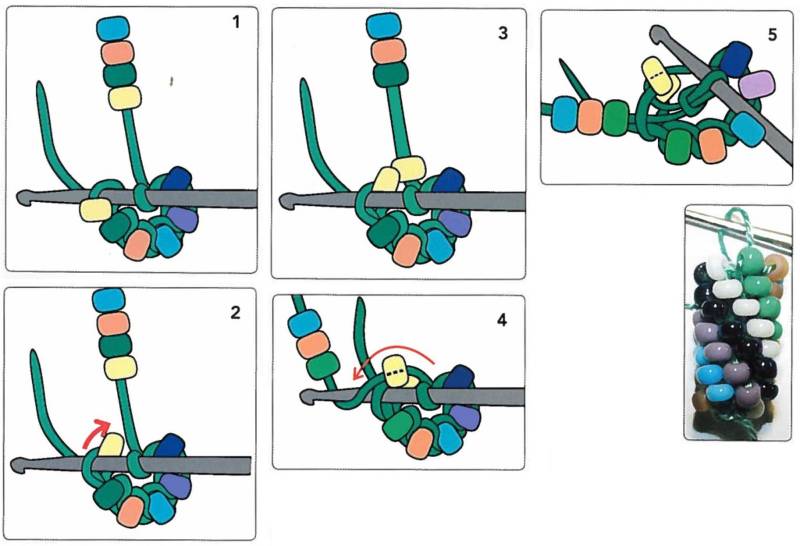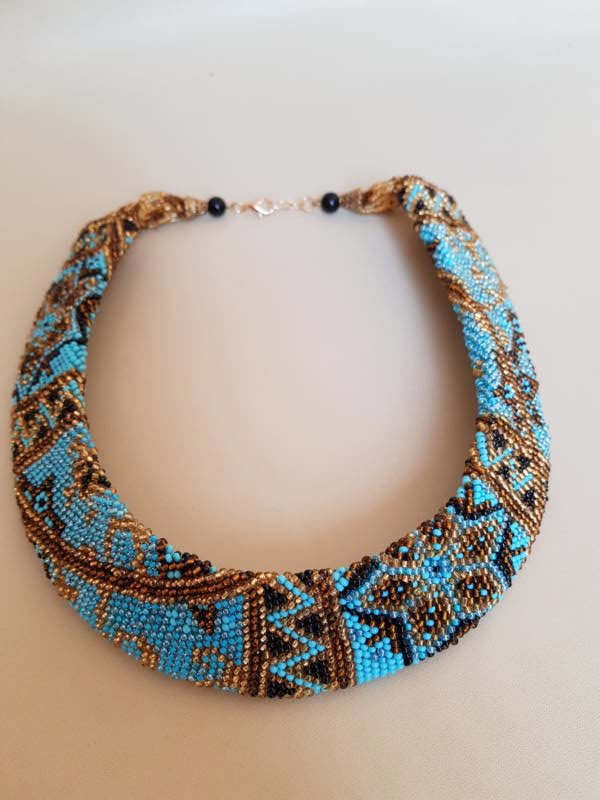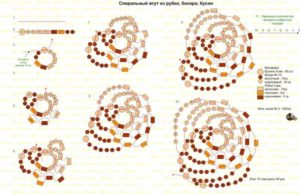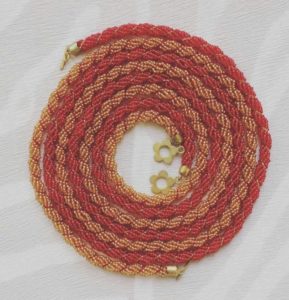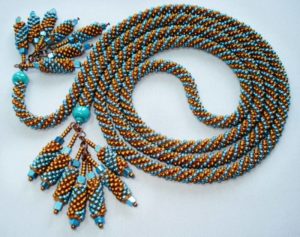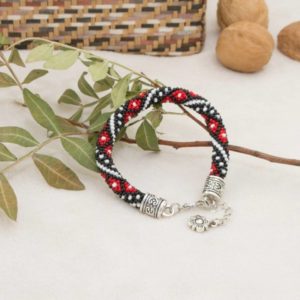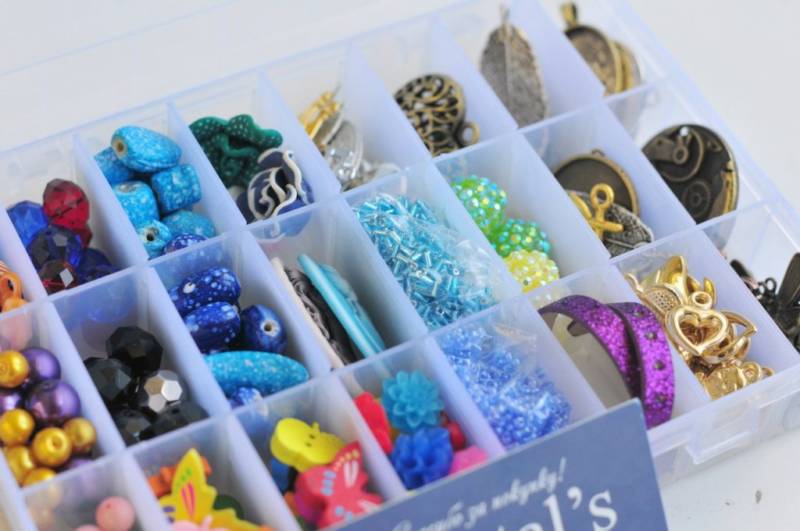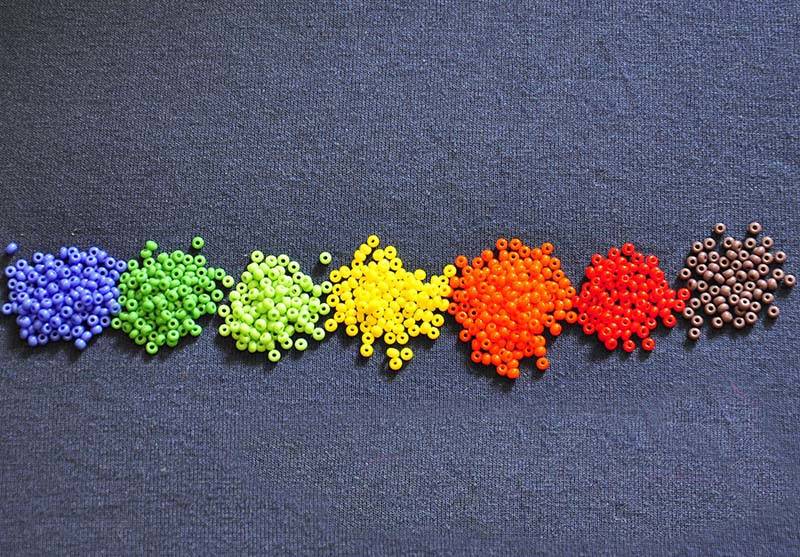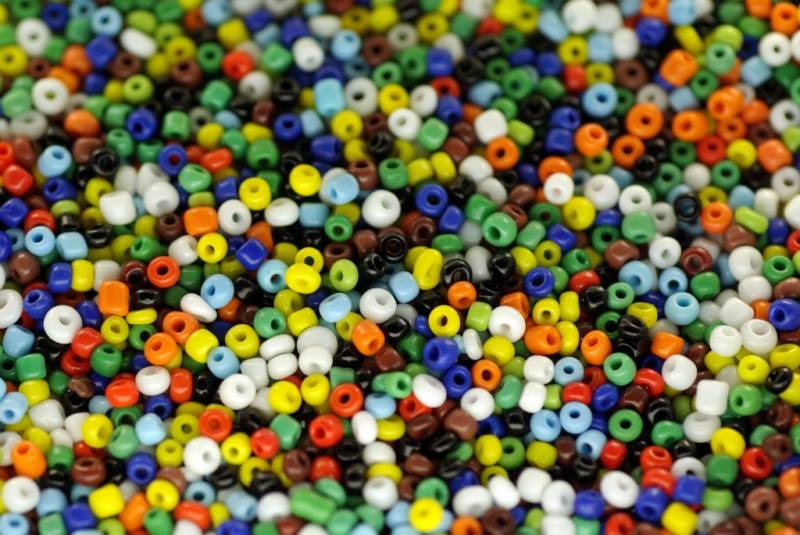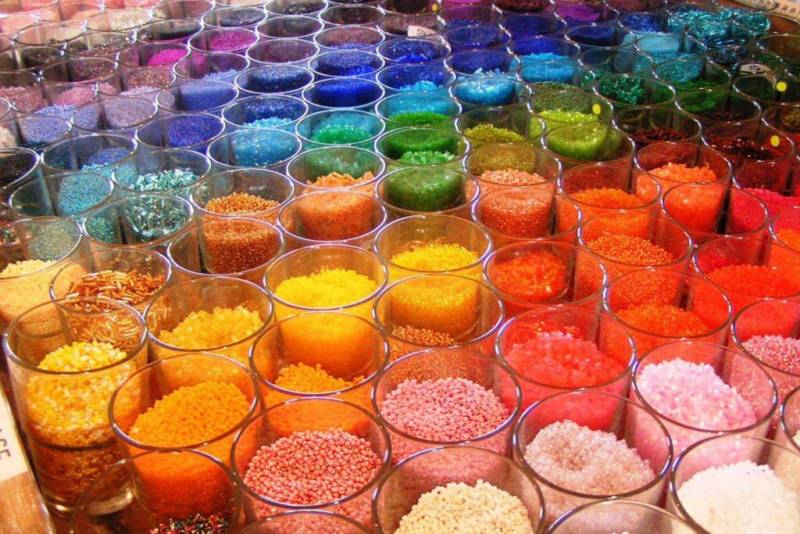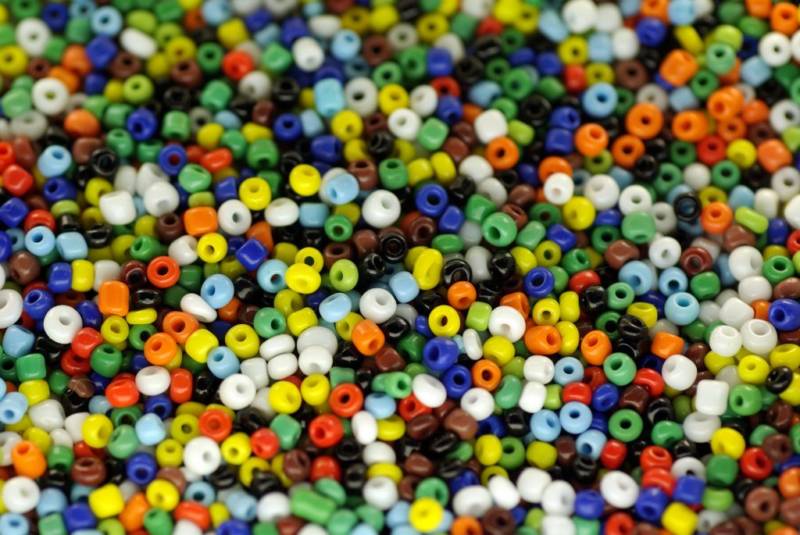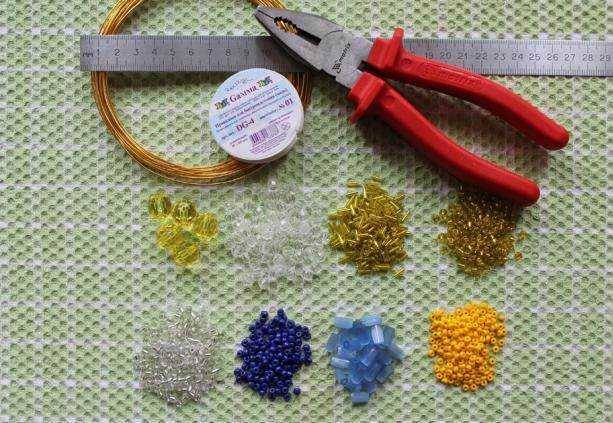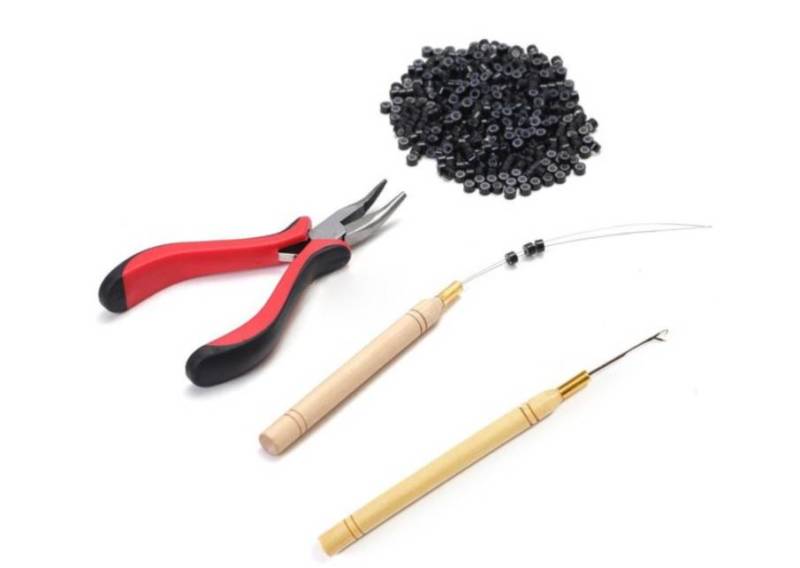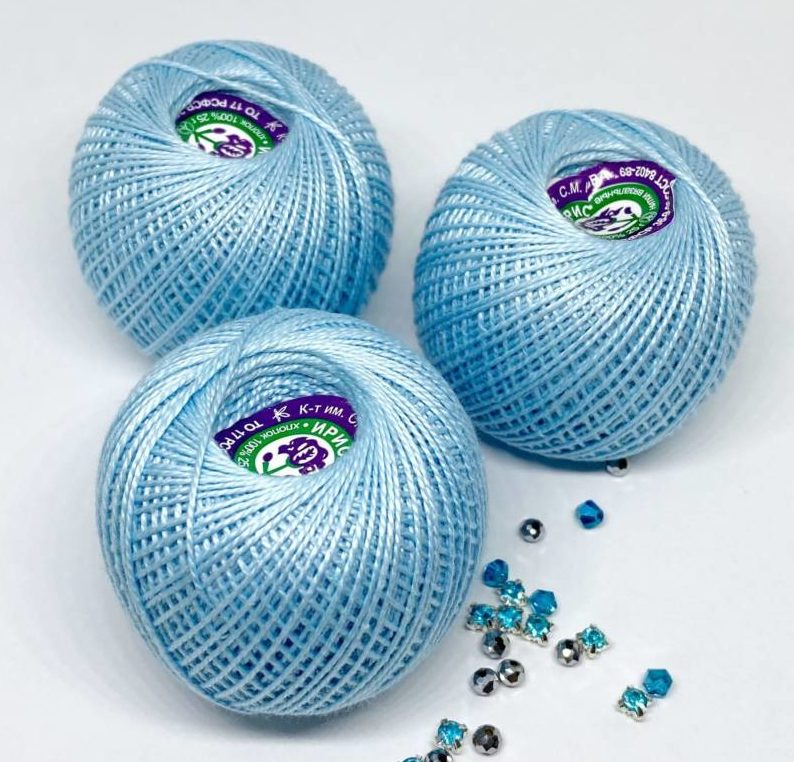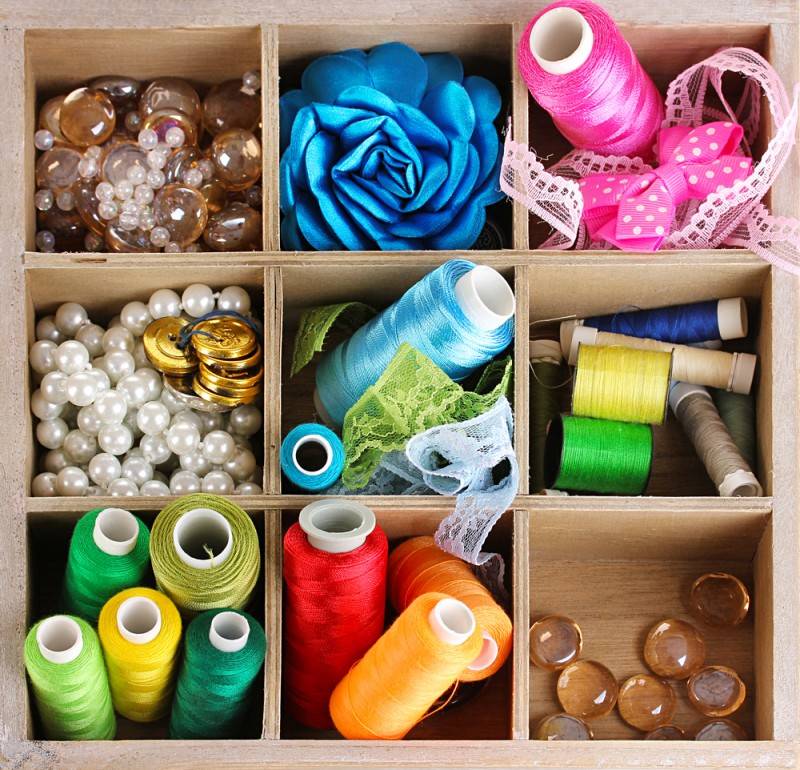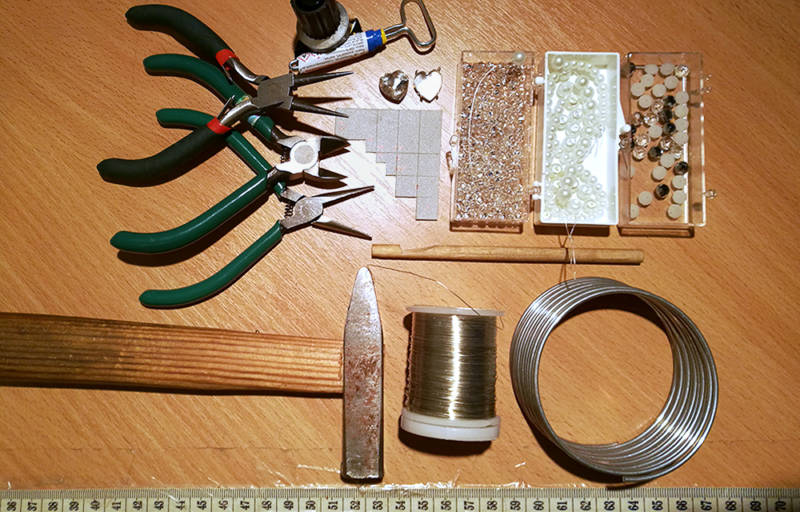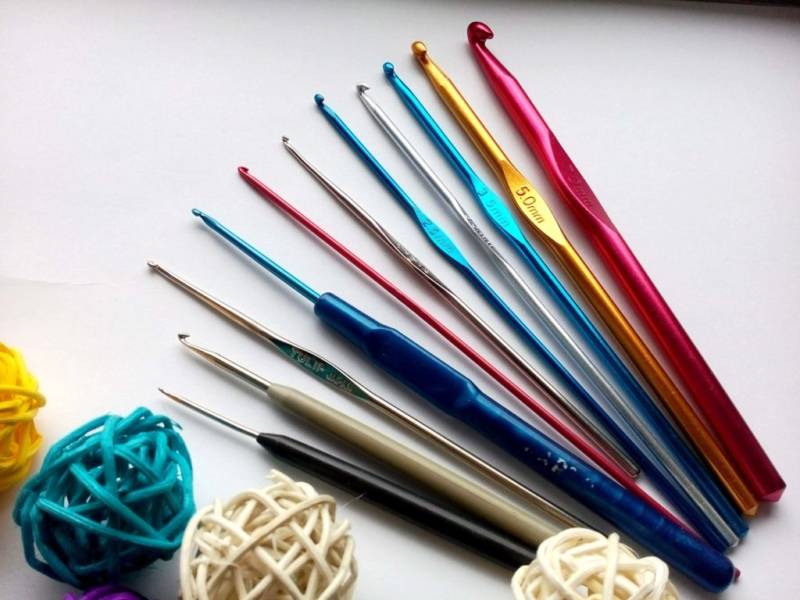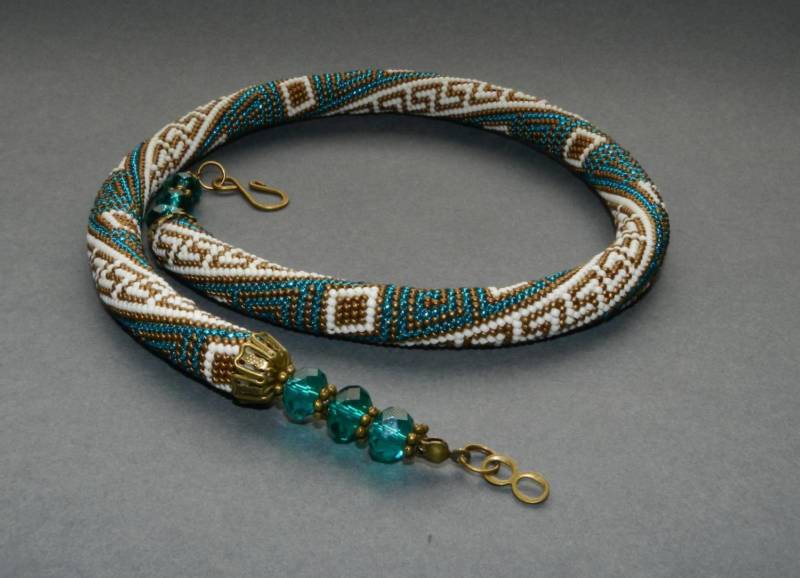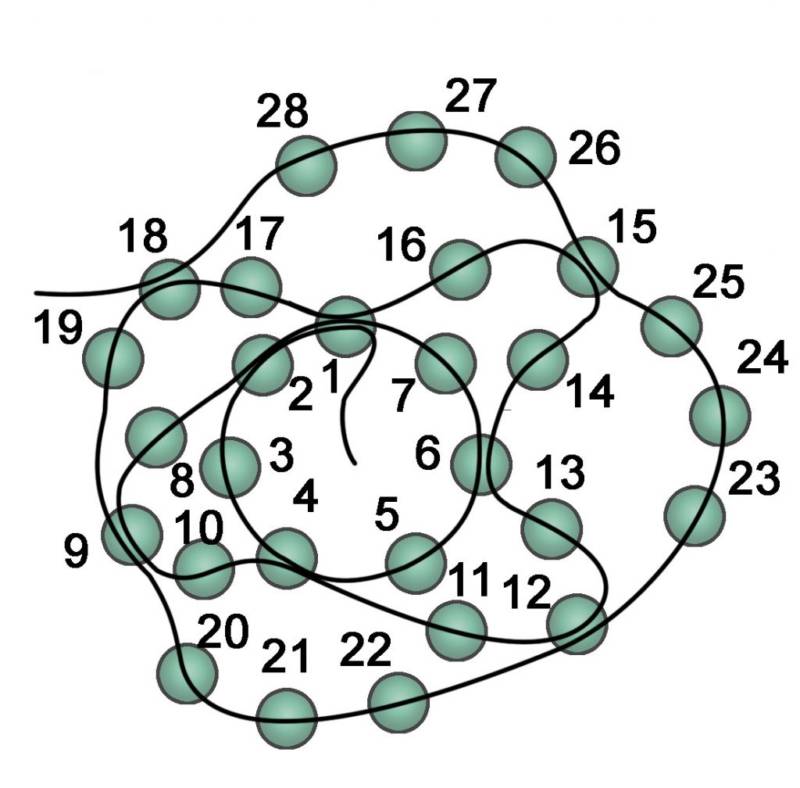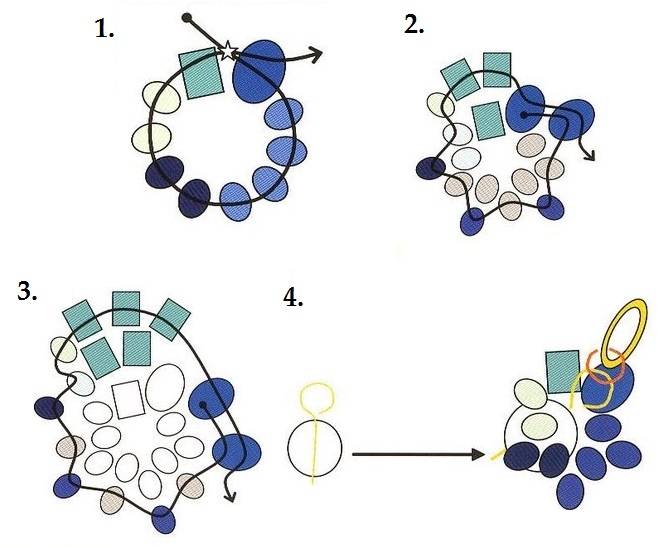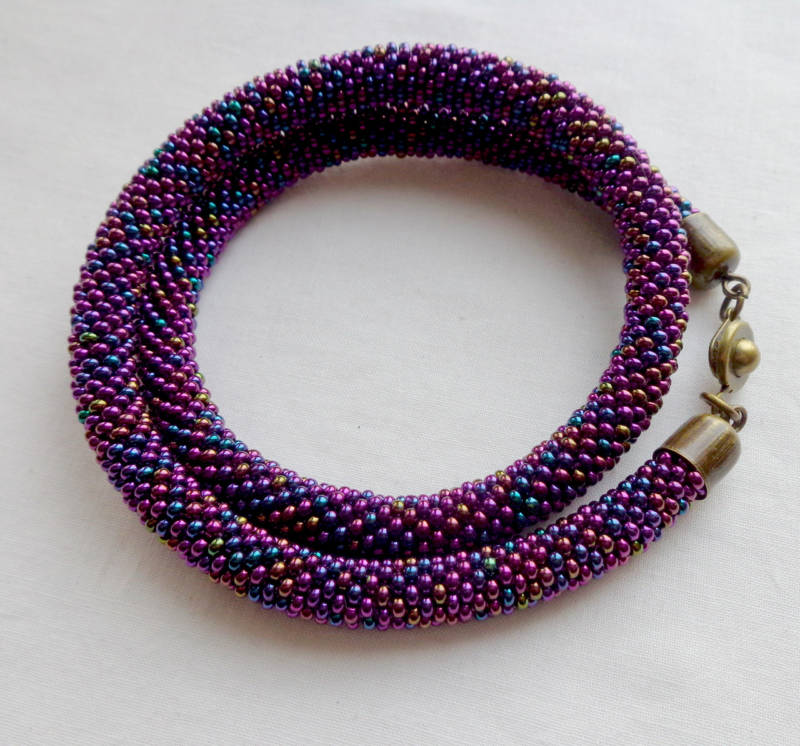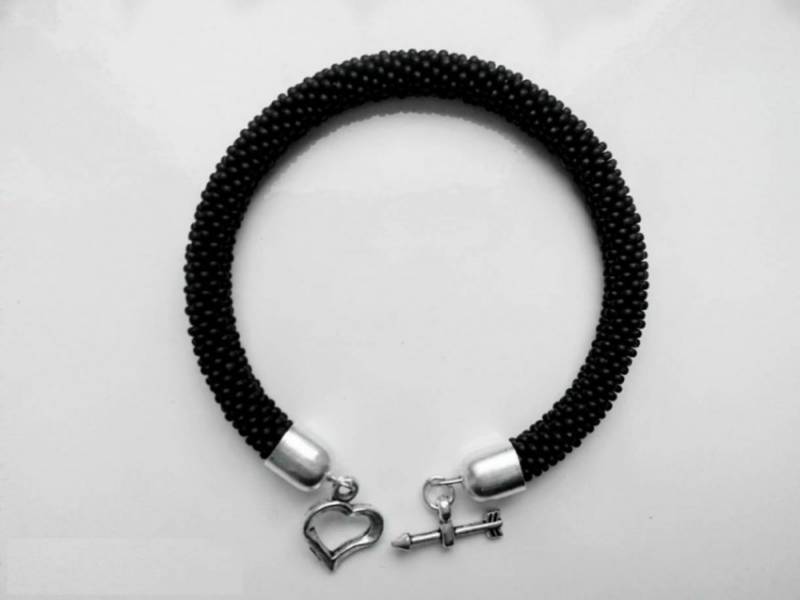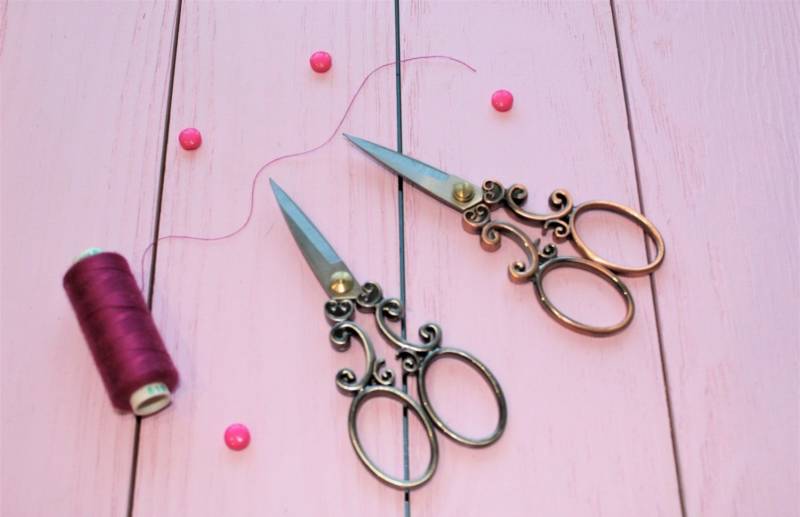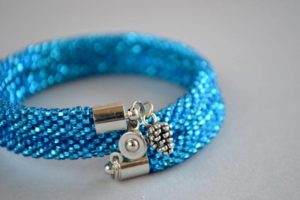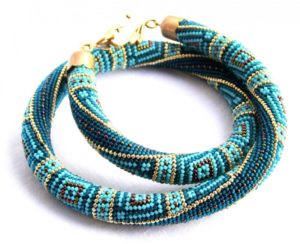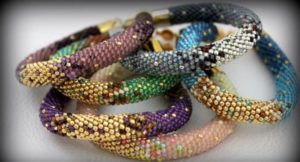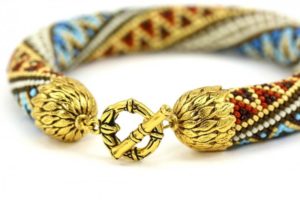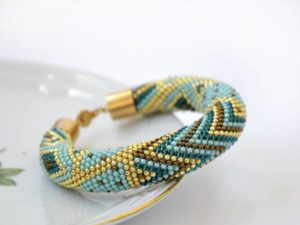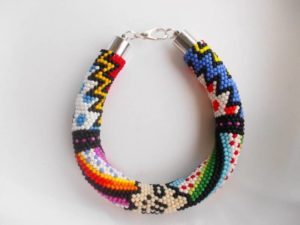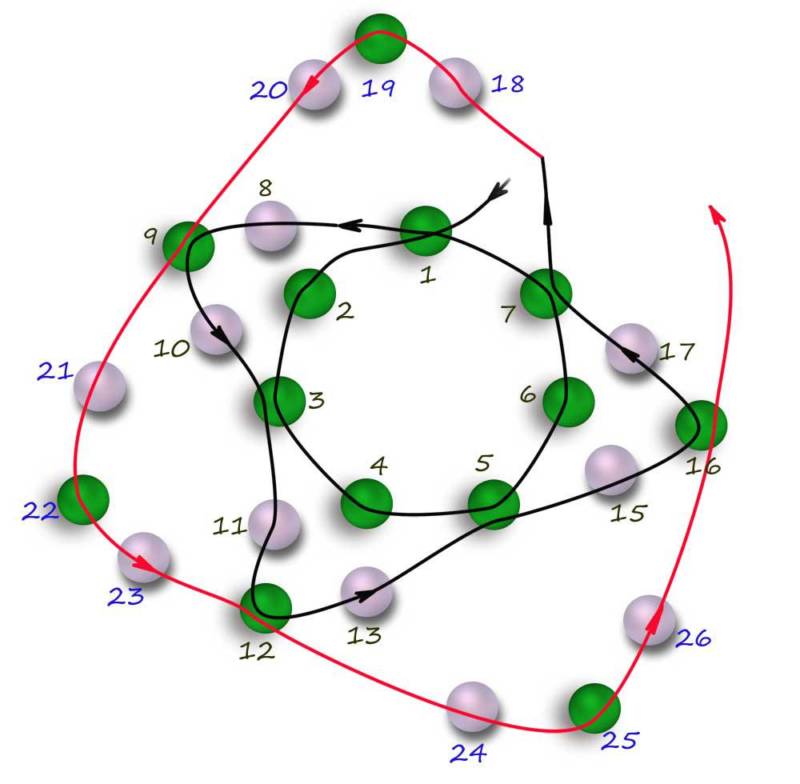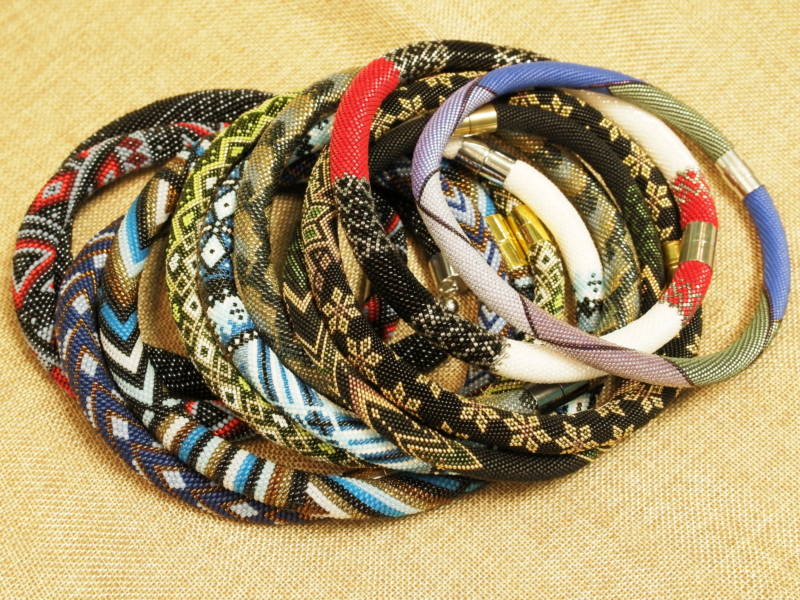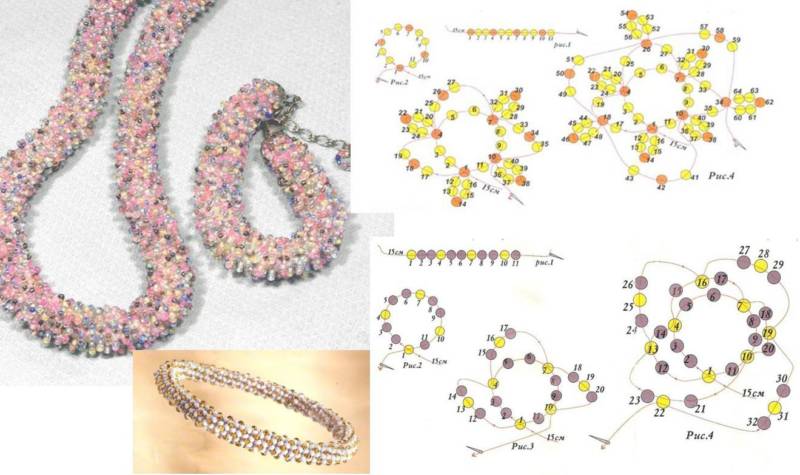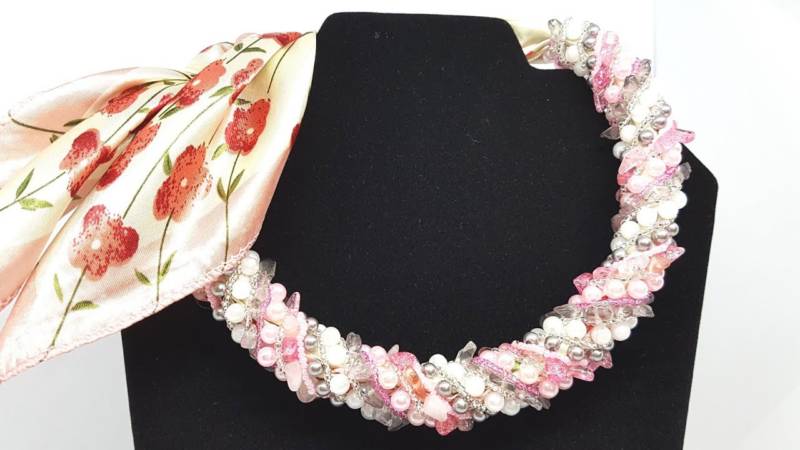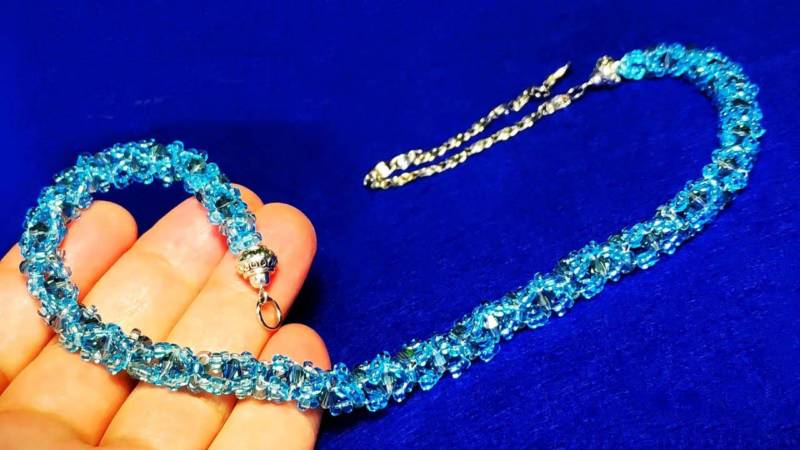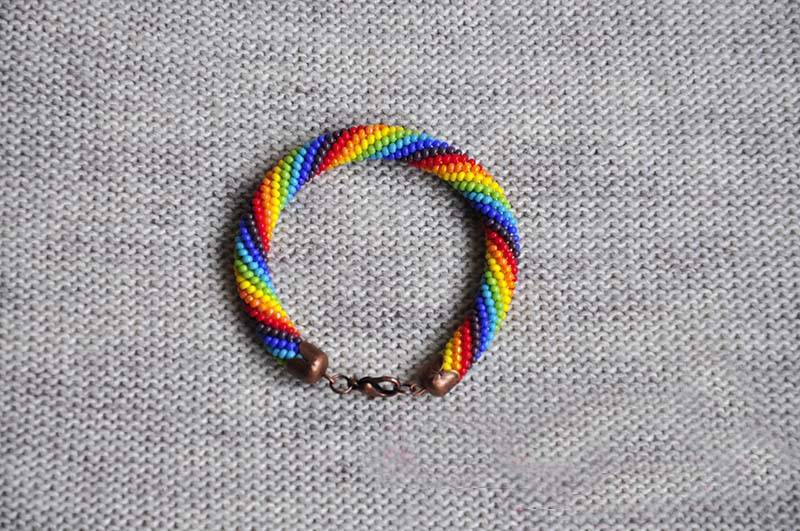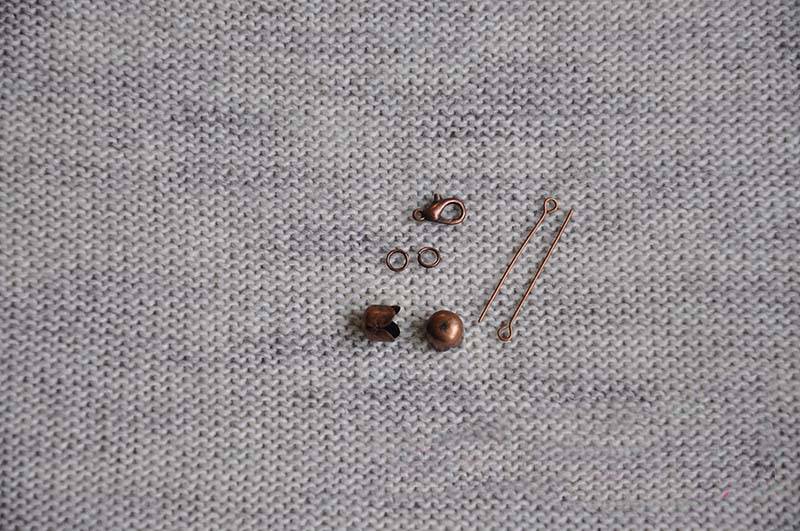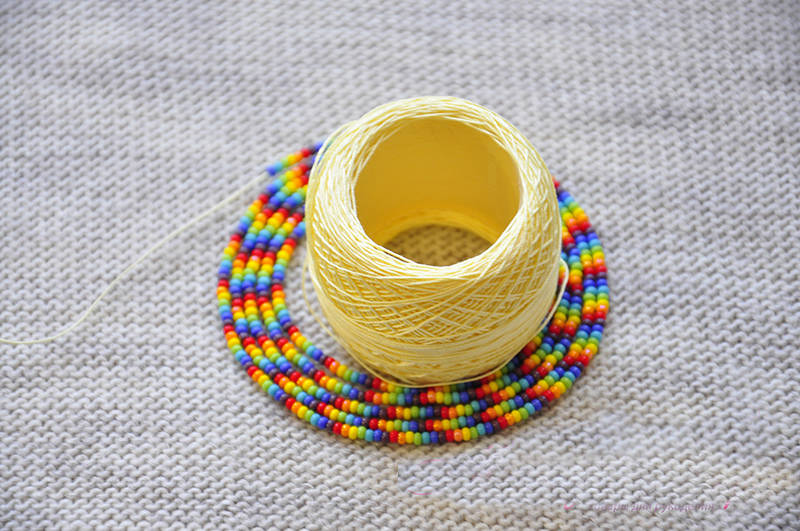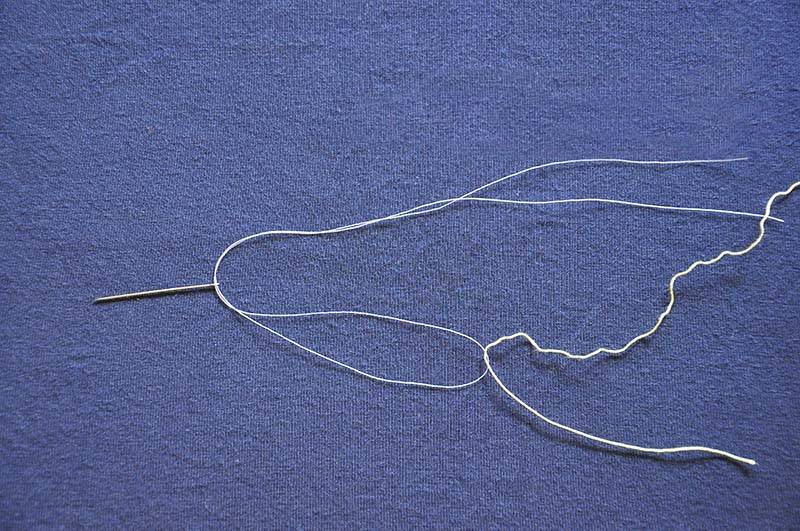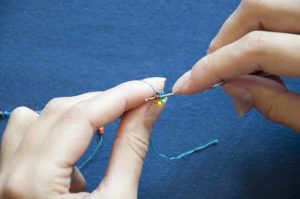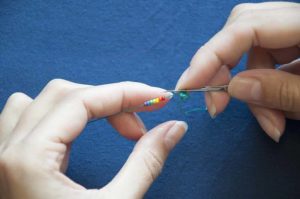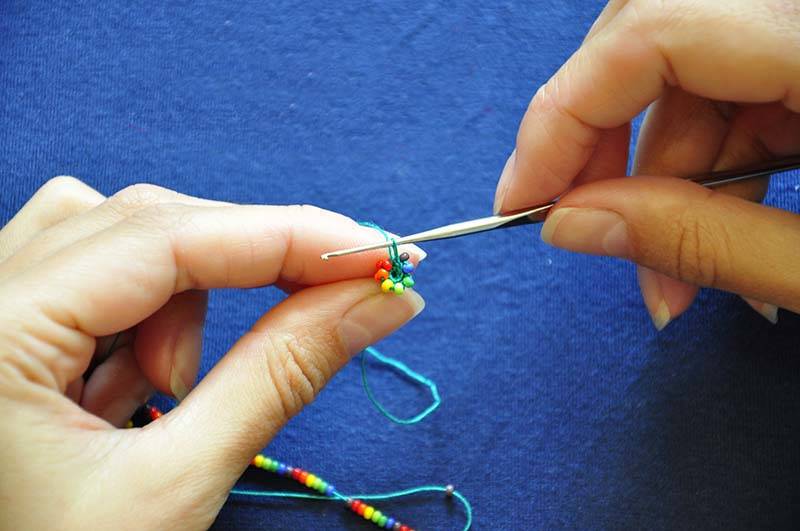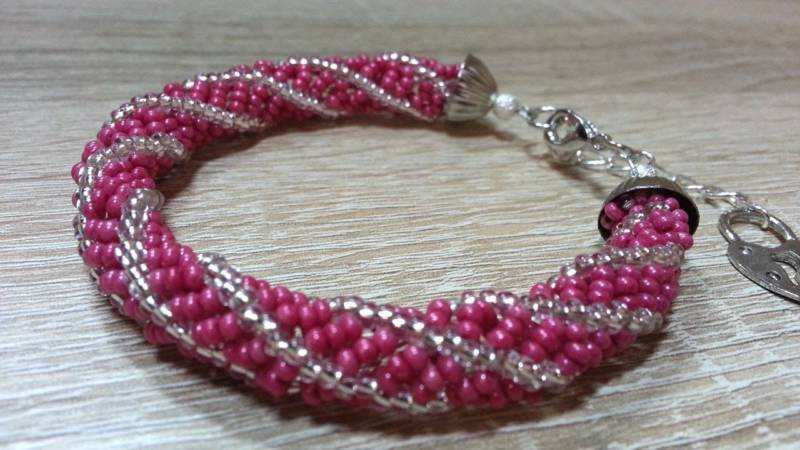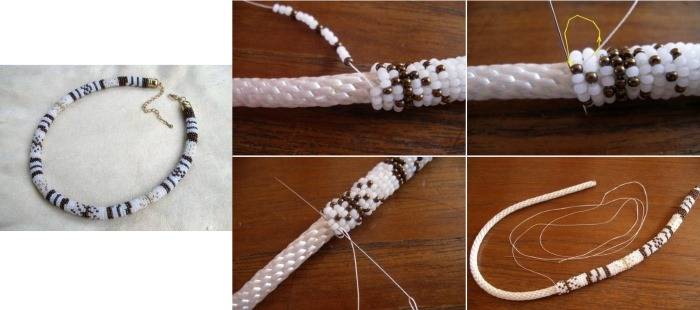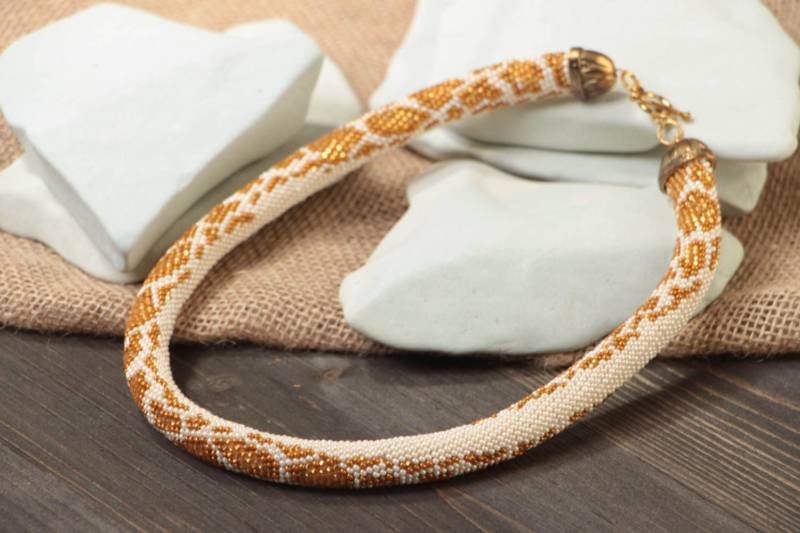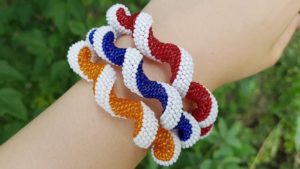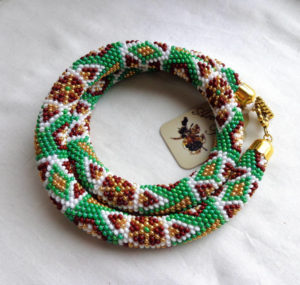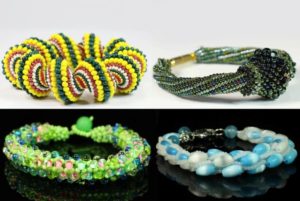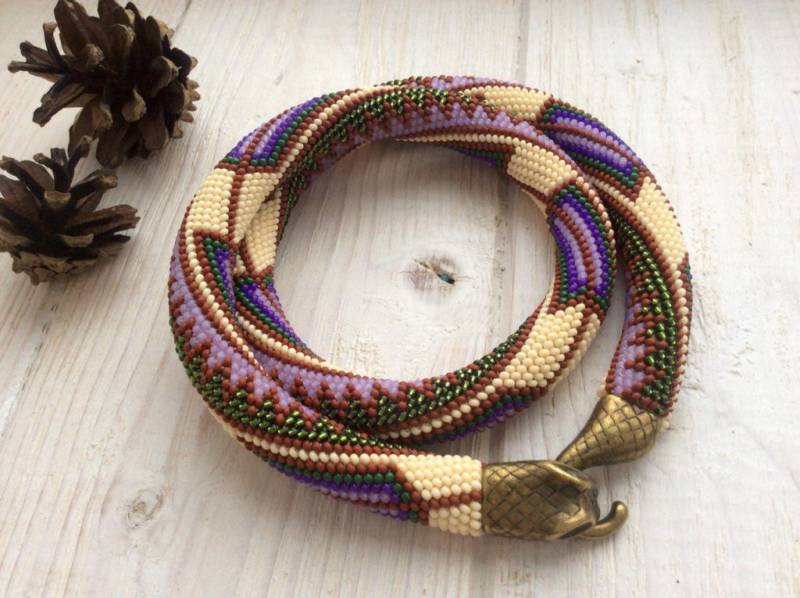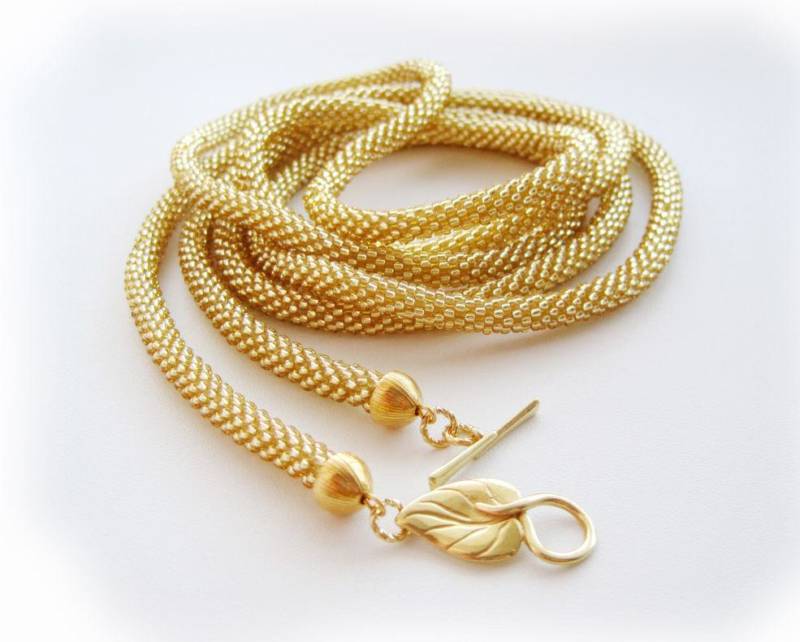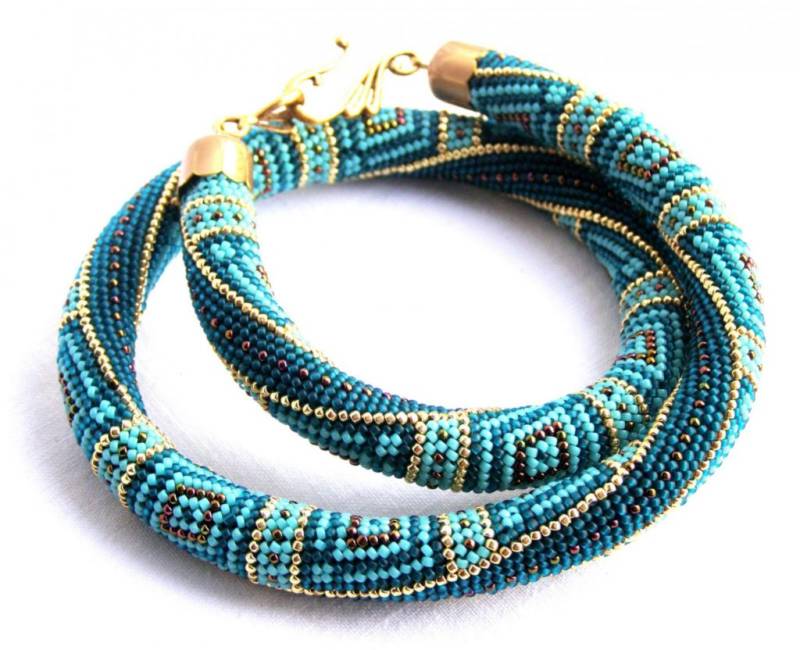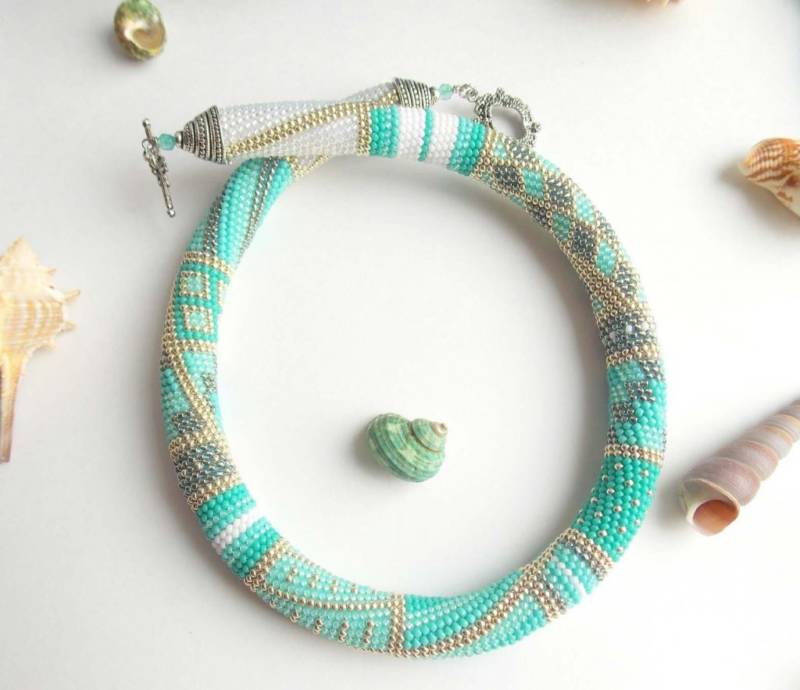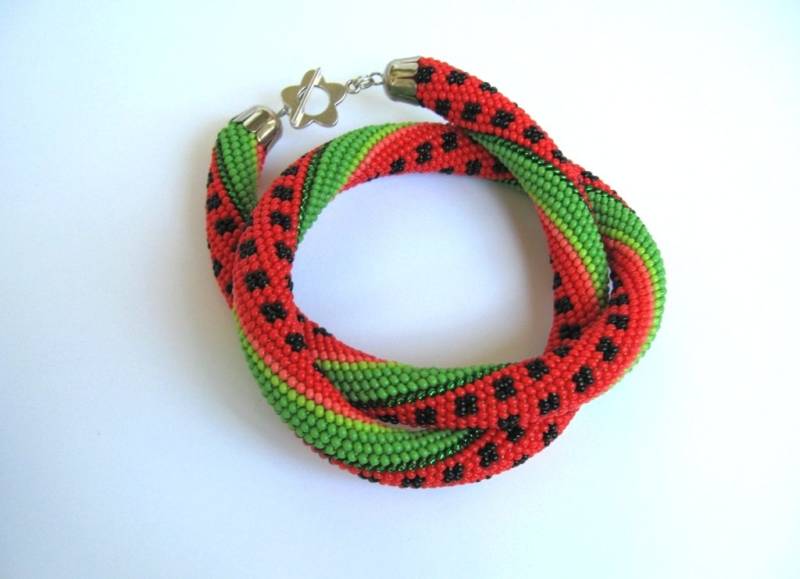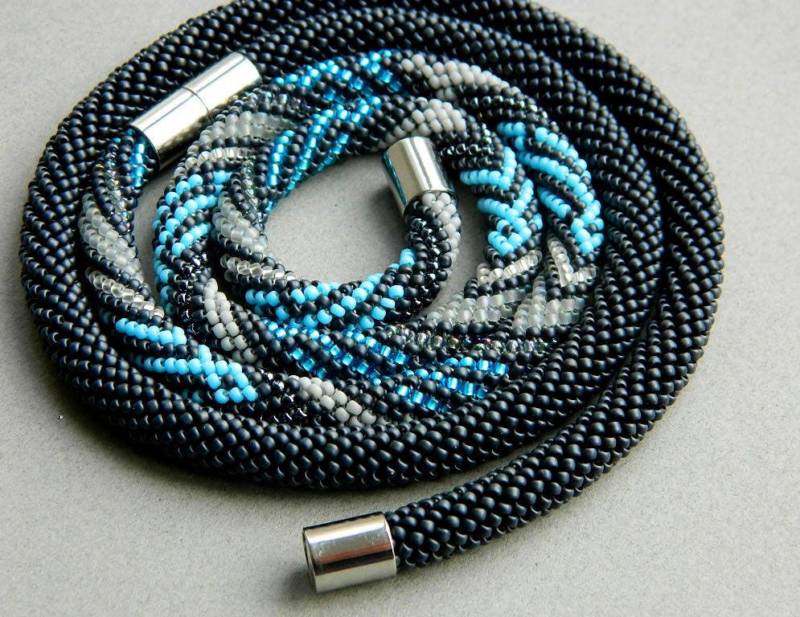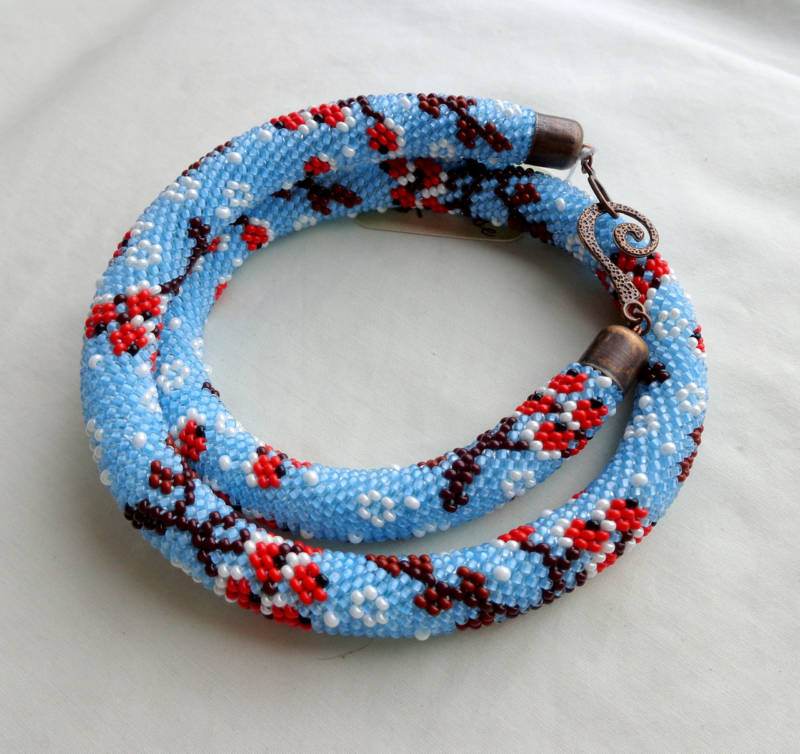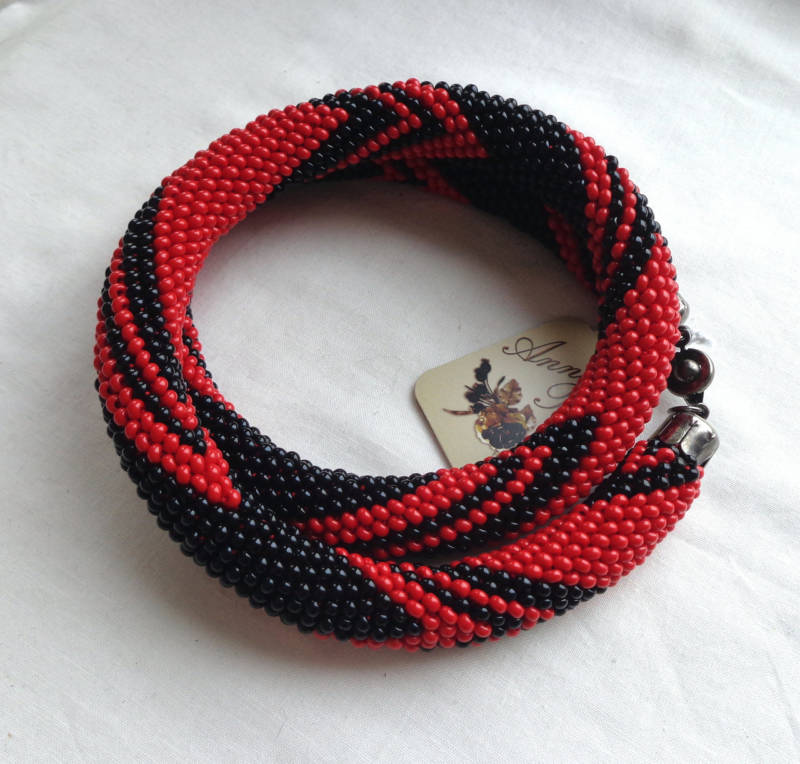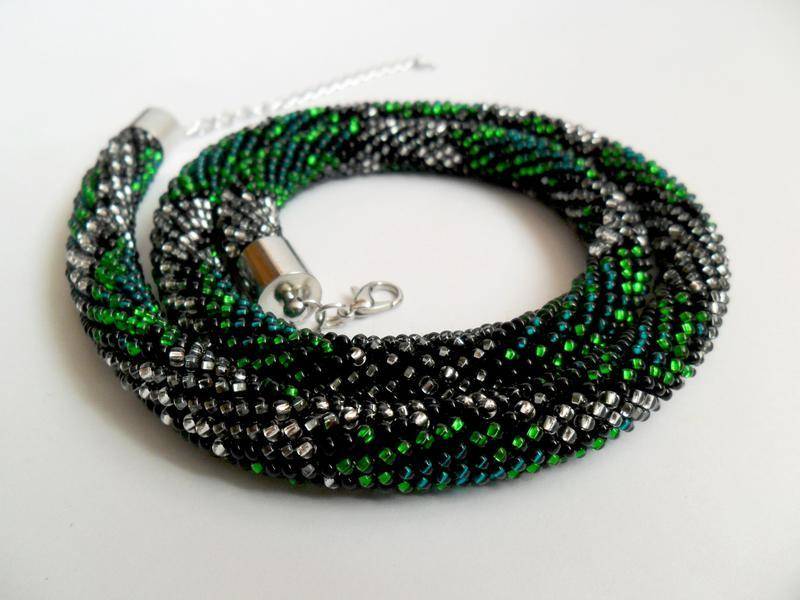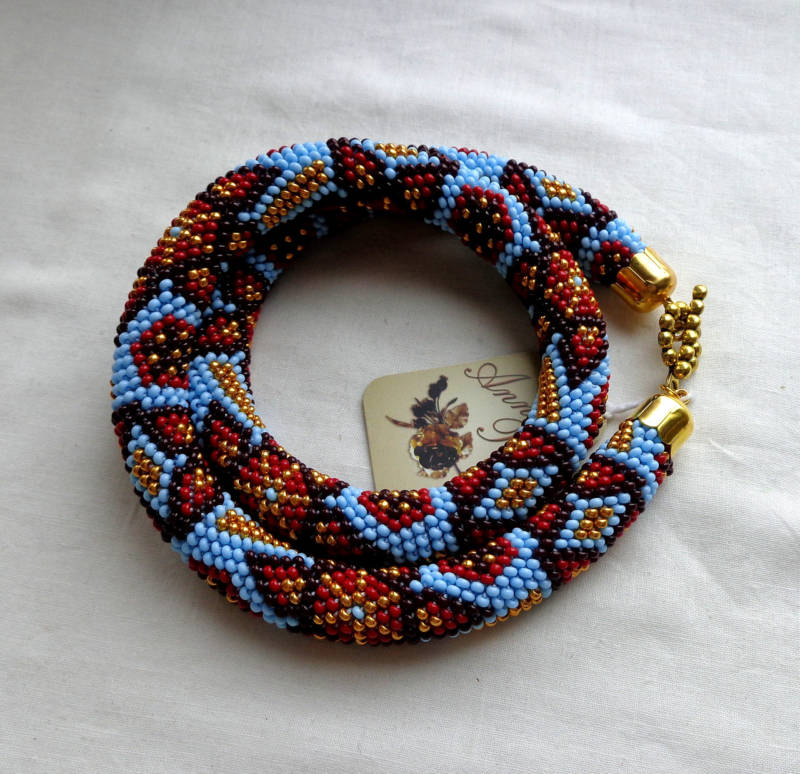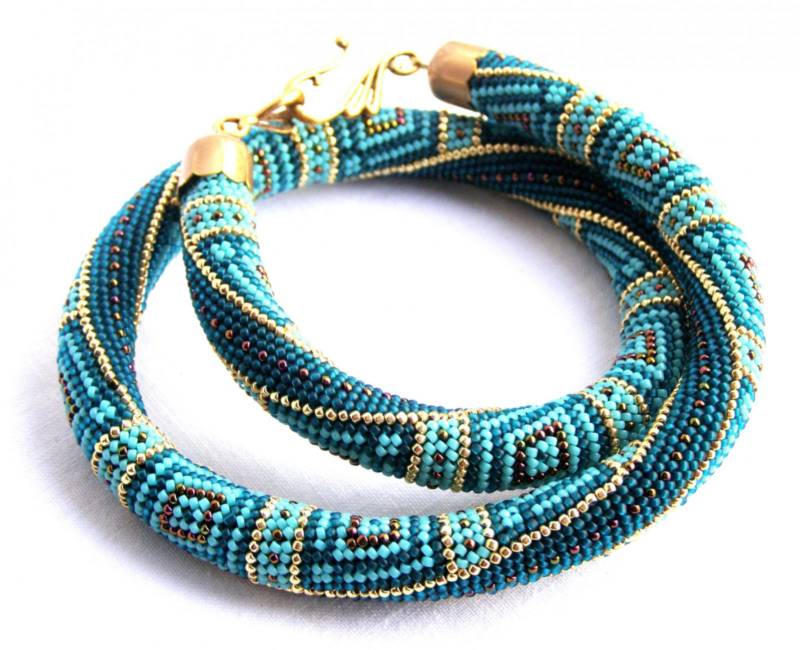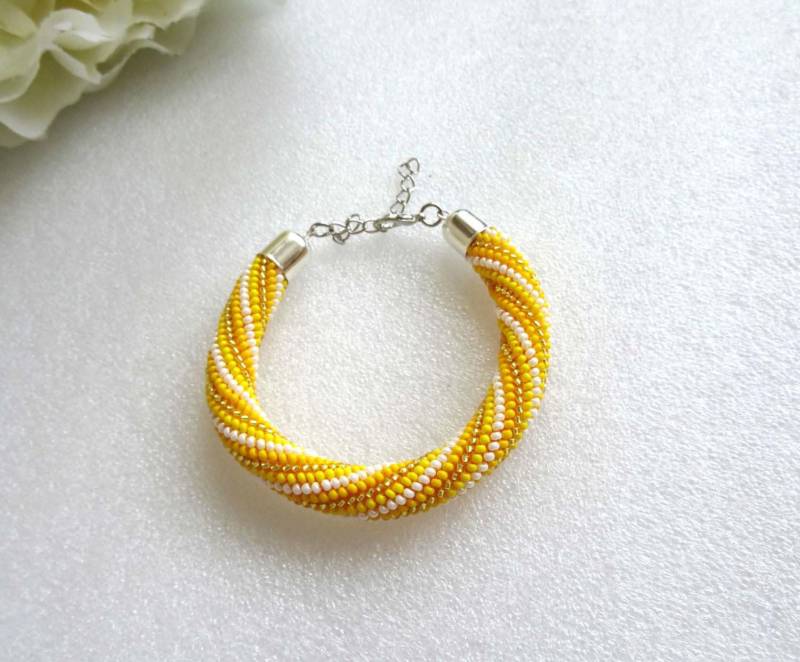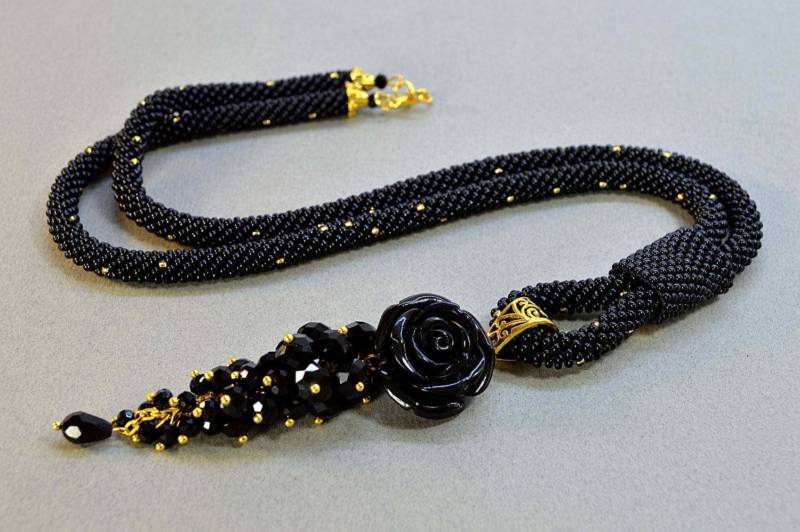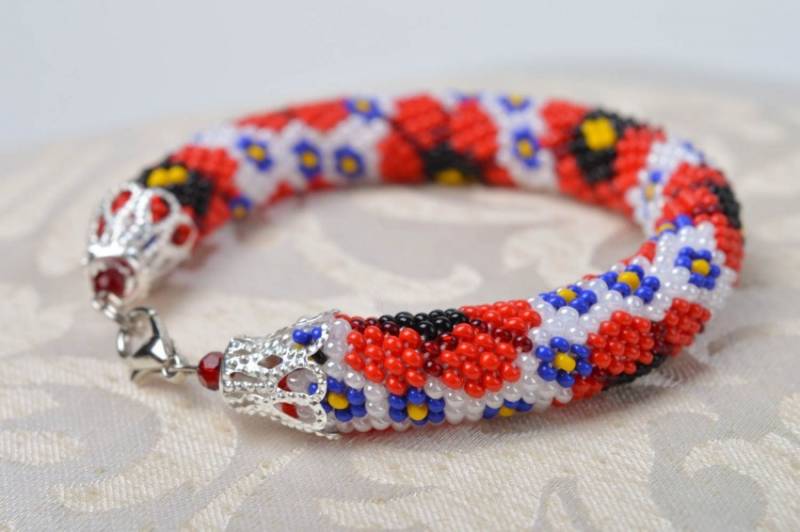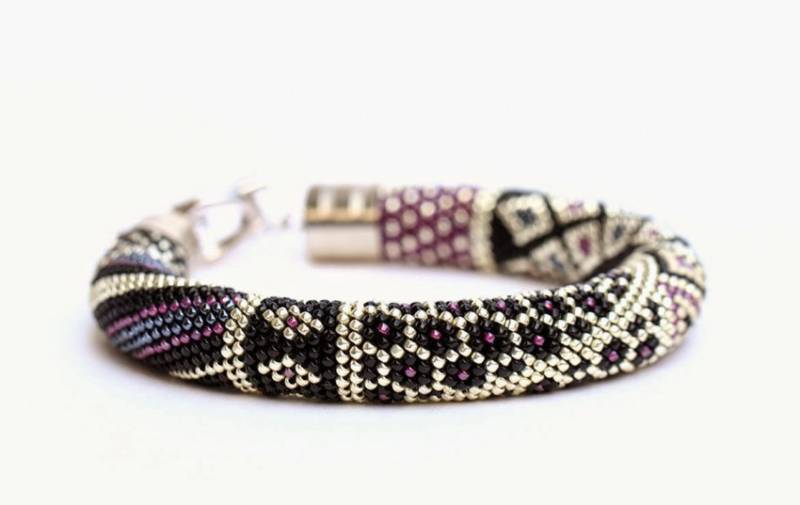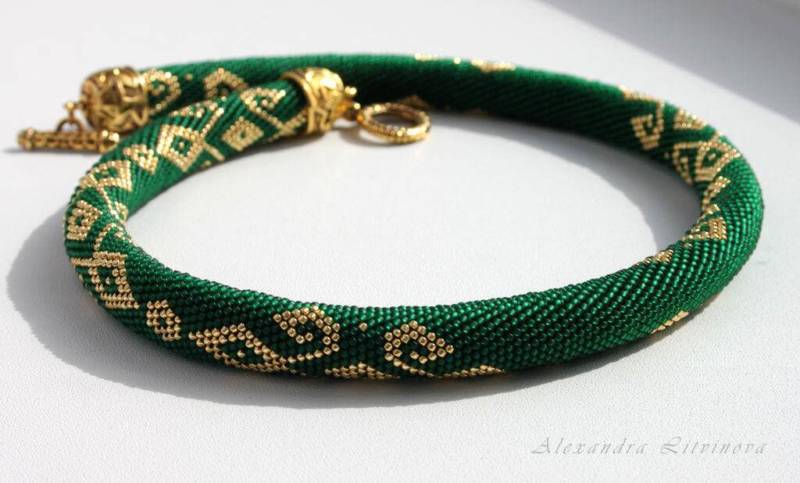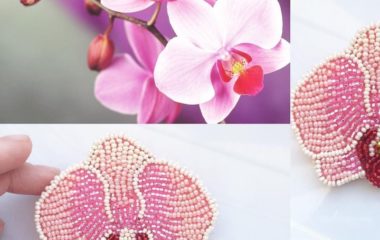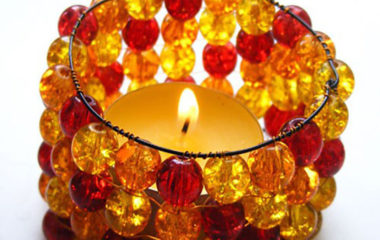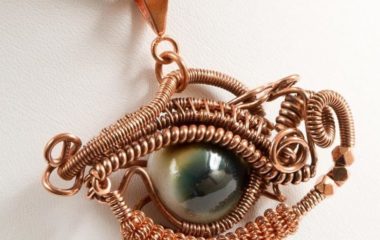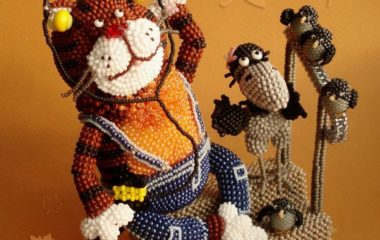Beadwork - weaving schemes, photo ideas and step by step master classes for beginners
Birthplace of beads Ancient Egypt. The process of making and processing was time-consuming and expensive, so beads were expensive and available only to the nobility.
Now in stores for needlework a huge selection of material in different colors, sizes and shapes.
Various techniques of weaving allow you to create products from simple to exquisite jewelry. Popular modern types include jewelry made of beaded harness.
What is a beaded bundle?
It is a hollow cord, woven from beads, beads and glass beads.
By experimenting with color, shape and weaving technique, you can create exceptionally beautiful, exclusive neck pieces and wristbands to wear everyday or evening dresses.
Loose in a ring, a long braid without a clasp - lariat allows you to tie it in different ways, creating original jewelry.
Weaving techniques
Braiding. Performed in the technique of classical weaving by threading on the fishing line or strong thread with a needle.
Crochet. At first you string on a long thread the necessary number of beads for the product in the order and quantity in which they will be woven into the braid.
Then from this thread to crochet columns and semi-columns, weaving in the scheme of beads.
Types of weaving
Depending on the type of weaving chosen, the tourniquet will look different in its finished form.
Openwork or American. It is made of beads of different shapes and colors. In the finished form due to small gaps you get a soft, openwork tourniquet. In such weaving will not be noticeable if the beads are not calibrated and individual copies are slightly different in size. The finished product looks like ribbons, braiding each other. It looks beautiful if several colors are used. A simple way for beginners.
Mosaic. Each circle has an odd number of beads that alternate in the pattern. Each new row is attached to the previous one.
Square. Made from beads of the same size, their number in the facets should be the same. In the section turns out a square. A complex variant.
Turkish. Beads, glass beads and beads of oval shape are used in the manufacture. A beautiful uncomplicated variant.
Knitted. It is the result of crochet with columns and semi-columns with a thread with beads on it. This method requires basic crochet skills.
Flat. Knit around a wide elastic. In the section looks like a flat oval.
In addition to these popular types, there are others:
- Monastic;
- spiral;
- needlepoint;
- parallel;
- French;
- brick.
Materials and tools
Before starting work, it is necessary to prepare everything you need, so that during the creative process you do not have to interrupt the work if suddenly something is not available.
During the work you will need:
- beads, glass beads, beads;
- a set of beading needles;
- hook;
- scissors;
- accessories (caps, clasps, magnetic locks);
- a soft cloth rug so that beads won't bounce from the table surface while working, in case of falling.
Choice of material
The choice of the starting material determines how the finished product will look like.
For the harnesses (except for the openwork one), it is important that the beads are calibrated by size, then the pattern will be clear and not blurry.
For beginners, it is better to choose round shapes with large inner holes. This is easier to work with.
The material must be of high quality, so the manufacturer is important. The highest quality and the most expensive recognized products from Japan.
In second place in quality and price is the Czech Republic.
Chinese is the cheapest, quite a lot of defects, the beads differ in size. Inner holes are different sizes, sometimes absent at all. It is possible to use it for training purposes. Suitable for openwork weaving, in this technique irregularities of individual elements are not visible.
Bead size 8/0 for beginners is suitable for the first work. After mastering the basics of weaving techniques, you can use 10/0 and 11/0.
Important! When choosing beads, pay attention to the number on the package, the larger the number, the smaller the size.
The strength of the product depends on the right choice of thread. Optimal for knitting harnesses cotton threads "Iris", "Monofilament".
You can use thread for sewing denim. If there is no strong thread, you can use thin threads in a few folds, but it is not very convenient.
Special fishing line for weaving is sold. It is strong, it is easy to work with.
Needle, hook and accessories are chosen according to the model of jewelry and the selected material. Most often a needle with a length of 10 cm and a hook №1 are used.
Reading the scheme
Beginners should take ready-made schemes, experienced craftsmen can themselves compose by hand on paper in a cell or use computer programs.
To work with the scheme, you must learn how to read it, and to do this you need to know the symbols on it.
Each column of a chart made with a computer program has a specific meaning and name:
- "Design"-the drawing of the diagram.
- "Unfolded" - the unfolded view of the harness.
- "Tourniquet" - the view of the finished product.
In the upper right corner there is information about the weaving:
- "Set" - the name of the pattern.
- "Circle" - the number of beads in the row.
- "Color Repeat" - the number and arrangement of beads by color in the report.
- "Report" - the arrangement of the beads on the repeating part of the pattern. Usually consists of several columns and rows.
It should be read from top to bottom, starting at the top left corner. Having learned to read the diagrams, you can perform weaving of any complexity.
Master classes for beginners
Many schemes only at first glance seem too complicated. In fact, many of them are available to beginners.
Start learning with simple variants, take a larger beads, for example, size 8/0.
Choose a color so that you can see the pattern clearly, so it's easier to understand the weaving and see the mistakes, if any.
You also need scissors, a beading needle, fishing line or strong thread, and accessories to decorate the ends of the harness.
The most difficult are the first few circles of weaving. Do not be afraid, if you learn the technique and get used to it, you will realize that everything will be easy.
Mosaic braid
A simple way to do it. During the learning process it is better to take beads of one color:
- String 7 beads on the fishing line. Connect in a ring, fasten by tying a tight knot.
- Thread the needle through the 1st part of the ring.
- Take on the needle 1 bead. Thread through the second piece of the ring, skipping the first one.
- In the rows of beads will be protruding one by one upwards. Through these protrusions need to pull the needle, passing those below.
- Weave in this way until the desired length of the piece is reached.
- Cut the fishing line at the ends, melt. Attach accessories, such as magnetic locks.
While working, pull up the thread, so that the weaving is even and tight.
Once you have mastered this simple method, you can move on to more complex multi-color patterns.
Openwork
Mastering it is not difficult. The knot is light and airy.
First of all, we assembled large round or crystal beads of dark color and 8/0 or 10/0 glass beads:
- Assemble on the needle a weaving element consisting of 2 light, small beads and 1 large, dark bead.
- Add 2 more of these elements (this will make 3 elements, each consisting of two beads and one bead).
- Connect into a ring. Once again pass the needle through all the elements and lead out of the 1st large bead.
- Dial 1 large and 2 small beads.
- Passing 2 small beads, pass the needle through the large bead from the previous row.
- Continue this way to the end of the row.
- Continue weaving by taking 1 large and 2 small beads and threading the needle through the large bead from the previous row. Watch the tension of the line.
- When you have made a braid of the desired length, cut and melt the fishing line. Fasten the hardware on the ends.
For the bracelet you will need beads and glass beads, preferably in contrasting colors:
- Put a bead on the fishing line, make a stopper out of it by inserting the ends of the fishing line from two opposite sides. Secure with a tight knot.
- Dial on the needle 3 elements of weaving, each consisting of 2 beads and 1 glass bead.
- Drop down the fishing line to the bead-bead.
- Pass the needle through the first 2 beads, closing the circle.
- Take on the needle 2 beads and 1 glass bead.
- Thread through the second bead of the previous row. Continue this way to the end of the row.
- Weave in this pattern until you get the desired length of the bracelet. A beautiful, two-colored spiral will be obtained.
- Insert a bracelet piece into the braided band.
- Fix the edges.
To make the weaving more comfortable, we can put a felt-tip pen inside the ring and weave around it.
Simple crochet
Beginners to master the technique of crochet beadwork, you should learn on small products with a simple pattern.
To understand the principle of the work, you should try to knit a 10-15 cm long.
Prepare black and yellow beads (other colors are possible), thread, needle, hook 1, scissors, paper clip.
Calculate the length of the working thread. The braid is 10 cm long, the number of beads in the ring - 7 pieces. The diameter of the ring of 7 beads is 1 cm.
The formula for calculating the length of the thread:
C = A*B.
- A is the length of the string;
- B - the number of beads in the ring;
- C - the length of the working thread, on which the beads are strung.
C = A * B = 10 cm * 7 pcs. = 70 cm.
- Measure 70 cm on the thread without cutting it off, fix it on the spool with a paper clip.
- Dial on it beads, alternating 7 black, 7 yellow.
- When you have beads on 70 cm of thread, remove the paper clip, add another 50 cm of thread and fasten the paper clip to the bobbin.
- Push the beads back to the bobbin.
- You can knit with columns or semi-colons. In the version under consideration, knit with half stitches.
- Make an air loop.
- With the next stitch, take 1 bead and knit.
- Next knit another 6 dark beads. The resulting chain of 7 loops should be closed in a ring. Inside should be a base of thread, outside the beads.
- The second row of 7 yellow elements. Insert the hook from the inside of the harness under the black bead. Pull the yellow one from the working thread to the hook. Grab the yarn behind it, pull it first under the bead of the previous row, then through the loop on the hook. You will get 1 stitch.
- Continue to knit in this way until the beads on the working thread run out.
When knitting with columns the beads are placed diagonally, and when knitting with semi-columns - horizontally. This makes the pattern look different.
If you knit with columns, you will need more time, because you will have to make more loops.
African technique
This method is based on beadwork. The essence is that the rope or cord is covered with beads over the whole surface.
Tools and materials are the same as for other weaving techniques, a cord is added, better with a braid of cotton, it is easier to sew beads on it:
- On the end of the cord fasten a thread. Thread the beads onto it. The fewer beads are strung and sewn at one time, the better the quality of the pattern will be.
- The resulting chain wrap around the cord, as tightly as possible and fasten in several places with cross stitches. The more securing stitches, the smoother the pattern.
- Continue by alternating a set of beads with securing the resulting chain to the cord.
- When you have a product of desired length, fasten the caps and locks on the ends.
This technique will suit those who like embroidery more than knitting.
Having learned to read the schemes and mastered the basic types of weaving, you can safely move on to more complex options.
By experimenting with the selection of beads, colors, shapes, you can create exclusive jewelry. They will emphasize your individuality, become a great gift for loved ones, can turn the hobby into a stable income.

